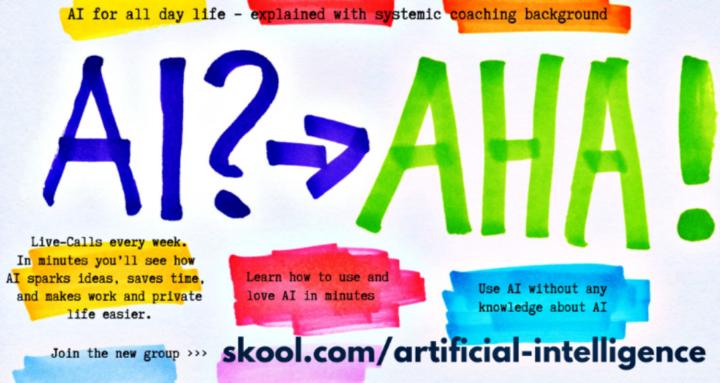7d • Human-Centered AI
Recommendation Systems and Personalization
Recommendation Systems and Personalization:
Recommendation systems are Narrow AI engines that learn to predict what a user wants next — be it a movie, product, article, or connection. Personalization is the interface layer that applies these predictions to shape the experience: what appears first, what’s highlighted, what’s suggested in context. Together, they optimize attention, retention, and satisfaction by adapting content to individuals or segments in real time. The core challenge lies in sparse signals, shifting preferences, and the need to balance relevance with diversity.
Explained for People without AI-Background
- A recommendation system guesses what you might like based on your past actions and others similar to you.
- Personalization means that what you see is tailored — different people get different results on the same app.
Collaborative Filtering: Preference By Peer Pattern
- User–Item Matrix – Treats history of likes, views, purchases as signals in a sparse grid.
- Similarity Scores – Recommend what similar users liked using cosine similarity or latent embeddings.
- Cold Start Problem – Struggles when there’s no interaction data for new users or items.
- Matrix Factorization – Decomposes preferences into lower dimensions for better scalability.
Content-Based Filtering: Profile Matching
- Feature Vectors – Build profiles based on user traits and item attributes.
- Matching Function – Recommend items with high overlap in keyword, genre, or category vectors.
- No Peer Dependency – Works well for new users by exploiting metadata.
- Limits – Tends to reinforce known interests without surfacing novel items.
Hybrid Models: Combining Signals
- Multitask Learning – Jointly train models on interaction and content data.
- Graph-Based Approaches – Use user–item interaction networks to improve ranking.
- Ensemble Pipelines – Blend collaborative and content scores with contextual signals.
- Production Systems – Netflix, YouTube, and Spotify use hybrid and bandit-based models in production.
Personalization Layers In Interfaces
- Ranking – Adjust what appears first or most prominently on screen.
- Layout Adaptation – Change visual structure based on user habits or segments.
- Notification Targeting – Time and content of alerts based on historical click patterns.
- Cross-Device Continuity – Sync preferences across phones, tablets, and desktops.
Bias, Feedback Loops, and Fairness
- Popularity Bias – Reinforces already dominant items, marginalizing niche content.
- Filter Bubbles – Excessive personalization narrows exposure to alternative viewpoints.
- Feedback Loops – Recommending leads to more clicking, which reinforces recommendations.
- Fairness Techniques – Apply debiasing, diversity boosts, or exposure constraints.
Evaluation and Metrics
- Precision and Recall – Measure accuracy of top-N suggestions.
- NDCG and MAP – Rank-sensitive metrics accounting for position.
- Novelty and Serendipity – Track diversity and ability to surprise constructively.
- Offline Vs. Online – Validate with test sets and live A/B experiments.
Real-Time Inference and Deployment
- Candidate Generation – Preselect pool of items using fast heuristics.
- Scoring Models – Rank candidates with neural networks or gradient boosting.
- Caching and Freshness – Balance performance with data recency.
- Scaling – Use vector databases or ANN (approximate nearest neighbor) search for speed.
Applications and Impact
- Commerce – Product recommendations, cross-sell, upsell, email targeting.
- Media – Content ranking, playlist curation, autoplay queues.
- Social – Friend suggestions, news feed ranking, group discovery.
- Education – Adaptive learning paths, resource suggestions.
Related Concepts You’ll Learn Next in this Artificial Intelligence Skool-Community
- Embeddings – Representing Users and Items in Latent Space
- Graph Neural Networks – For Recommender Architectures
- Evaluation – A/B Testing and Metric Optimization
Internal Reference
Narrow AI – ANI
1
0 comments

skool.com/artificial-intelligence
Artificial Intelligence (AI): Machine Learning, Deep Learning, Natural Language Processing NLP, Computer Vision, ANI, AGI, ASI, Human in the loop, SEO
Powered by



